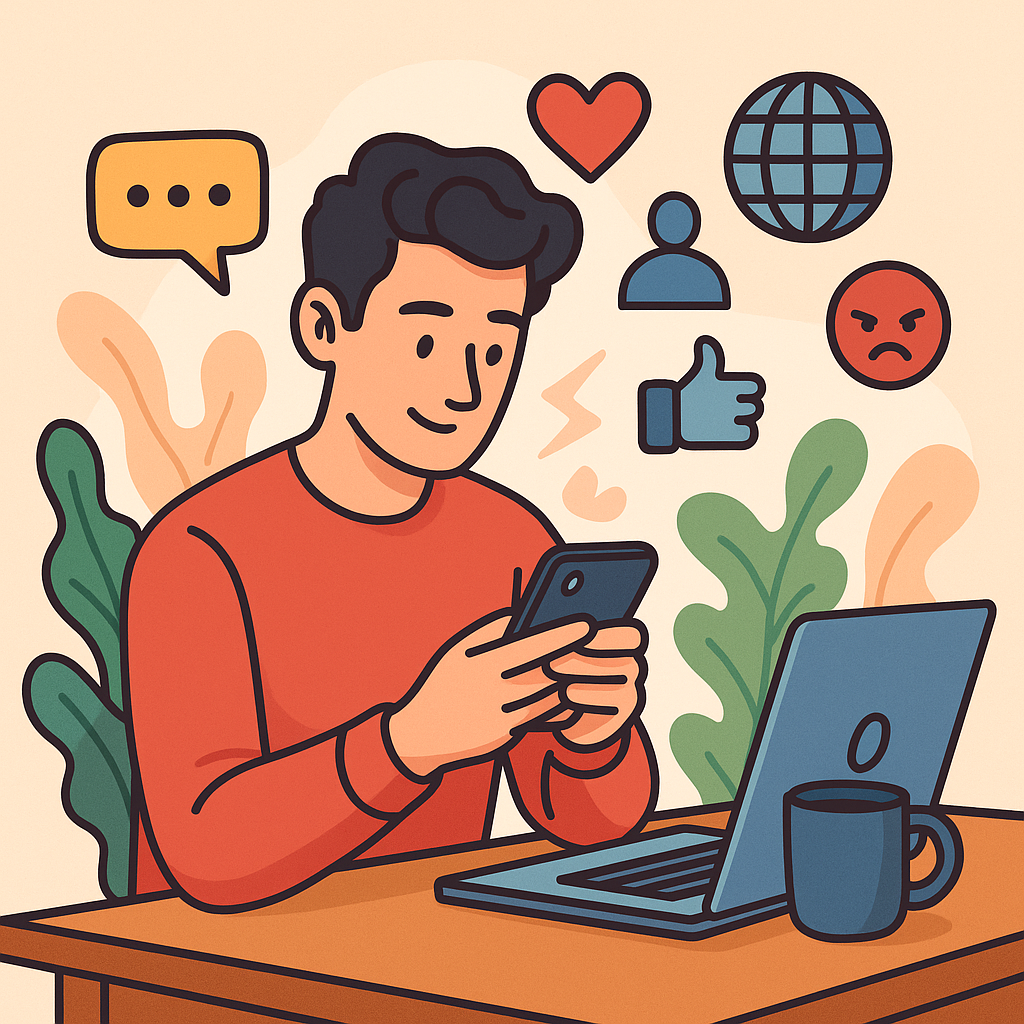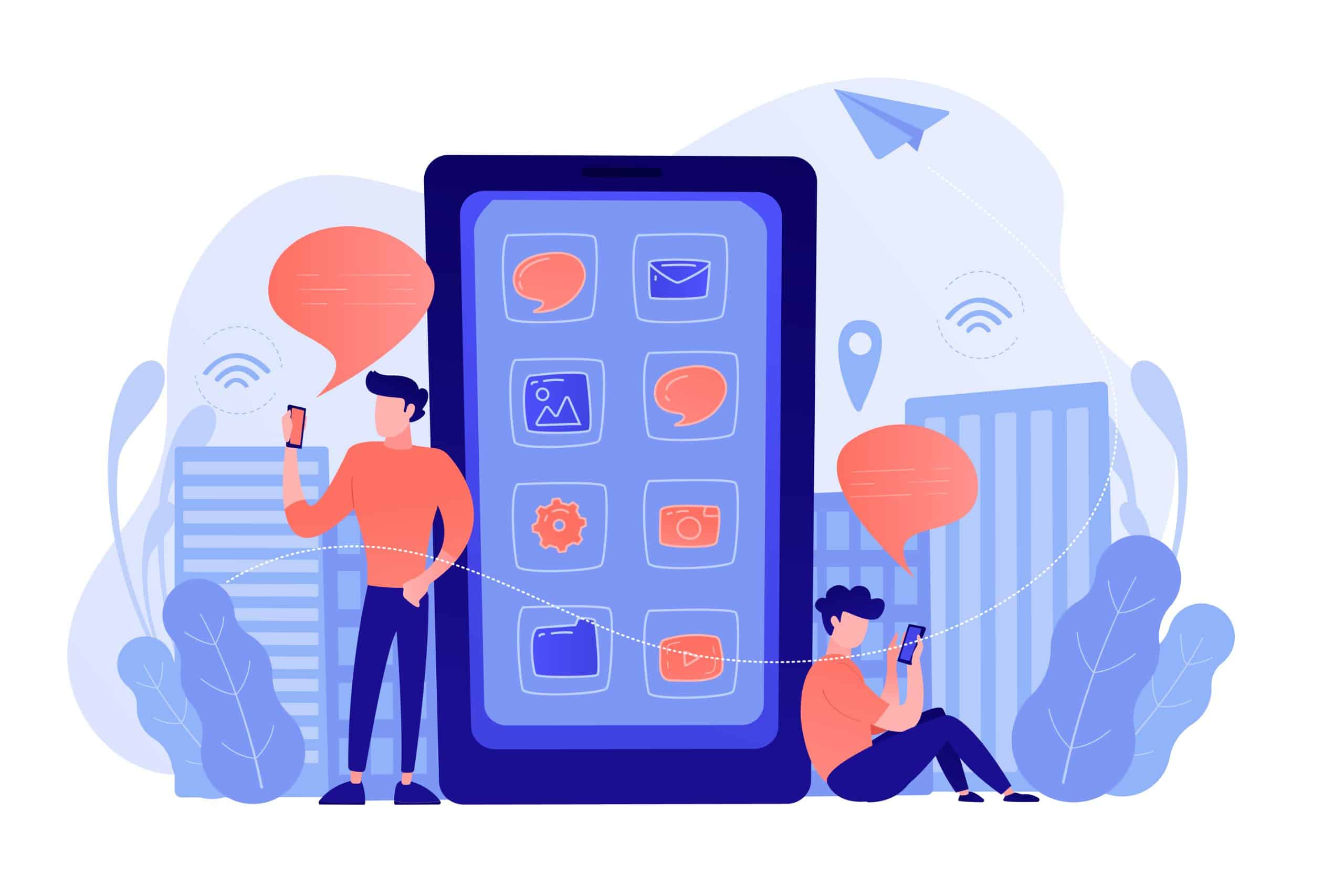Your online habits speak volumes about who you are offline life — from mood and self-expression to confidence and relationships. Explore how your digital patterns reveal your emotional landscape—and what they mean for real life.

Why This Matters
What starts as a scroll, a reaction, or a click leads to patterns that mirror your mental health, social skills, and habits offline. A growing body of research in cyberpsychology, digital wellness, and virtual behavior reveals these links can be subtle—or startling.
1. Screen Time & Emotional Balance
Research shows excessive social media use links to irritability, anxiety, and emotional distress. In a review of digital media effects, patterns like multitasking and FoMO (fear of missing out) correlate with poor mental health—especially anxiety and depressive symptoms.
Similarly, caregivers report 55% of teens showing signs of digital distress—erratic mood, sleep issues, and social withdrawal traced to tech overuse.
Offline signal: If you feel mentally drained or disconnected after screen time, your device habits may be feeding those emotions.
2. Online Disinhibition: Bold Words, Real Impacts
The “online disinhibition effect” explains why people behave differently online—often more rashly—due to anonymity, delay in responses, and low empathy.
Some find relief in self-disclosure, while others slip into toxic behavior—a mirror of impulsivity or emotional fatigue.
Offline signal: Rage tweets, flaming comments, or trolling can signal increased stress or reduced impulse control that might bleed into real-world interactions.
3. Dual Lives: Curated vs. Real You
A defining trait of Gen Z: nearly half say their online selves differ again from real life.
Some feel safer sharing fears or controversial views online than in person—shaped by comfort in digital masks .
Offline signal: If you’re more expressive online, it may signal real-life loneliness, anxiety, or suppressed needs requiring attention and connection.
4. The Proteus Effect: Avatars That Shape Reality
In virtual worlds, avatars influence behavior—a phenomenon known as the Proteus effect. Users embody traits associated with their avatars (e.g., taller avatars lead to stronger negotiation behaviors).
Meta-analyses confirm users adopt those traits, even off-screen, including confidence or dominance .
Offline signal: If dressing up an avatar boosts confidence, it shows how digital self-image can translate into real behavior—opening pathways for positive growth.
5. Social Media & Mental Health
Heavy social media use ties to internalized mental health challenges like anxiety or depression, particularly in teens and young adults.
Teens with anxiety typically spend more time online and compare themselves more—but derive less satisfaction from virtual friendships.
Offline signal: If you scroll seeking validation, but feel worse, it may mirror real-life emotional struggles like self-esteem deficits.
6. Slacktivism vs. Real Actions
Even superficial online activity—like signing petitions—can catalyze real-world behavior. The Psychology Today article highlights how digital activism (slacktivism) can reinforce identity, prompting offline engagement.
Offline signal: That online post or share may be sparking offline habits like volunteering, awareness, or even conversations—and points to your values at work.
7. Phubbing: Screen Snubs in Real Life
When your phone draws your attention away from loved ones, it’s called phubbing—and the data shows it’s rising, affecting efficiency and relationship trust.
Offline signal: If you’re guilty of phubbing, it signals misplaced digital priorities—especially if your in-person connections are suffering.
8. Digital Detox: Reclaiming Balance
Taking intentional screen breaks—“digital detoxes”—has shown positive impacts: reduced stress, better sleep, improved posture and stronger offline relationships.
Offline signal: If you feel better unplugged, that’s a proven cue that your device habits were harming your well-being—and the detox restored harmony.
9. Habit Formation: Cue-Loop-Reward
Digital habits follow classical habit loops—cues, cravings, behaviors, rewards. Research shows behavior change platforms like HabitLab help curb usage, but lapses are common.
Offline signal: If you feel powerless to stop scrolling, you’re trapped in cue-response cycles that mimic other habit addictions—but also can be reshaped.
Practical Guide: Decoding & Transforming Online Habits
| Step | What to Do | Why It Matters |
|---|---|---|
| 1. Track & Reflect | Use screen time trackers. Reflect in journaling: “I felt ___ after ___.” | Identifies emotional triggers tied to screen use. |
| 2. Set Intentional Boundaries | Limit social apps, mute notifications, schedule device-free times. | Breaks habit loops and restores control. |
| 3. Bridge Online-Offline Persona | If you’re bolder online, try journaling or safe talking offline. | Helps normalize authentic self-expression. |
| 4. Use Avatars Strategically | Choose avatar traits that reflect traits you want to strengthen offline. | Leverages Proteus effect for confidence, benevolence, or focus. |
| 5. Embrace Digital Detox | Start with small detoxes—meals, 2 nights offline, mini retreats. | Recharges mental fatigue, strengthens real-world bonds. |
| 6. Cultivate Offline Activities | Exercise, reading, hobbies—not just online. | Supports balanced identity and counteracts phubbing. |
| 7. Seek Support | Talk to trusted friends or professionals if online behavior harms mental health. | Validates changes and offers external accountability. |
Key Takeaways
- Your mood after screen time reveals emotional signals.
- Online boldness sometimes hides offline suppression.
- Avatars aren’t just fun—they reshape your real world self.
- Digital habits mimic addictions—but can be changed.
- Balance isn’t a buzzword—it’s essential.
Conclusion
Your online habits say about your offline life more than you realize—they’re barometers of mood, identity, and relationships. Screen time, comments, avatars, and posting all weave into a larger pattern: who you are, how you feel, and what you become.
By listening carefully, setting boundaries, and embracing smart digital strategies, you can gain awareness—and turn signals into space for growth, connection, and authenticity.
References
1. Tomas Chamorro‑Premuzic, “How different are your online and offline personalities?”, The Guardian, September 24, 2015
https://www.theguardian.com/media-network/2015/sep/24/online-offline-personality-digital-identity
2. Marc‑Andreas Birkhölzer et al., “Personality associations with online vs. offline social capital and life satisfaction”, BMC Psychology, 2024
https://bmcpsychology.biomedcentral.com/articles/10.1186/s40359-024-02265-9
3. Molly Olmstead, “Narcissists always give themselves away – with this one bad habit that’s tough to hide”, New York Post, May 23, 2025
https://nypost.com/2025/05/23/lifestyle/this-phone-habit-will-immediately-help-you-spot-a-narcissist/






